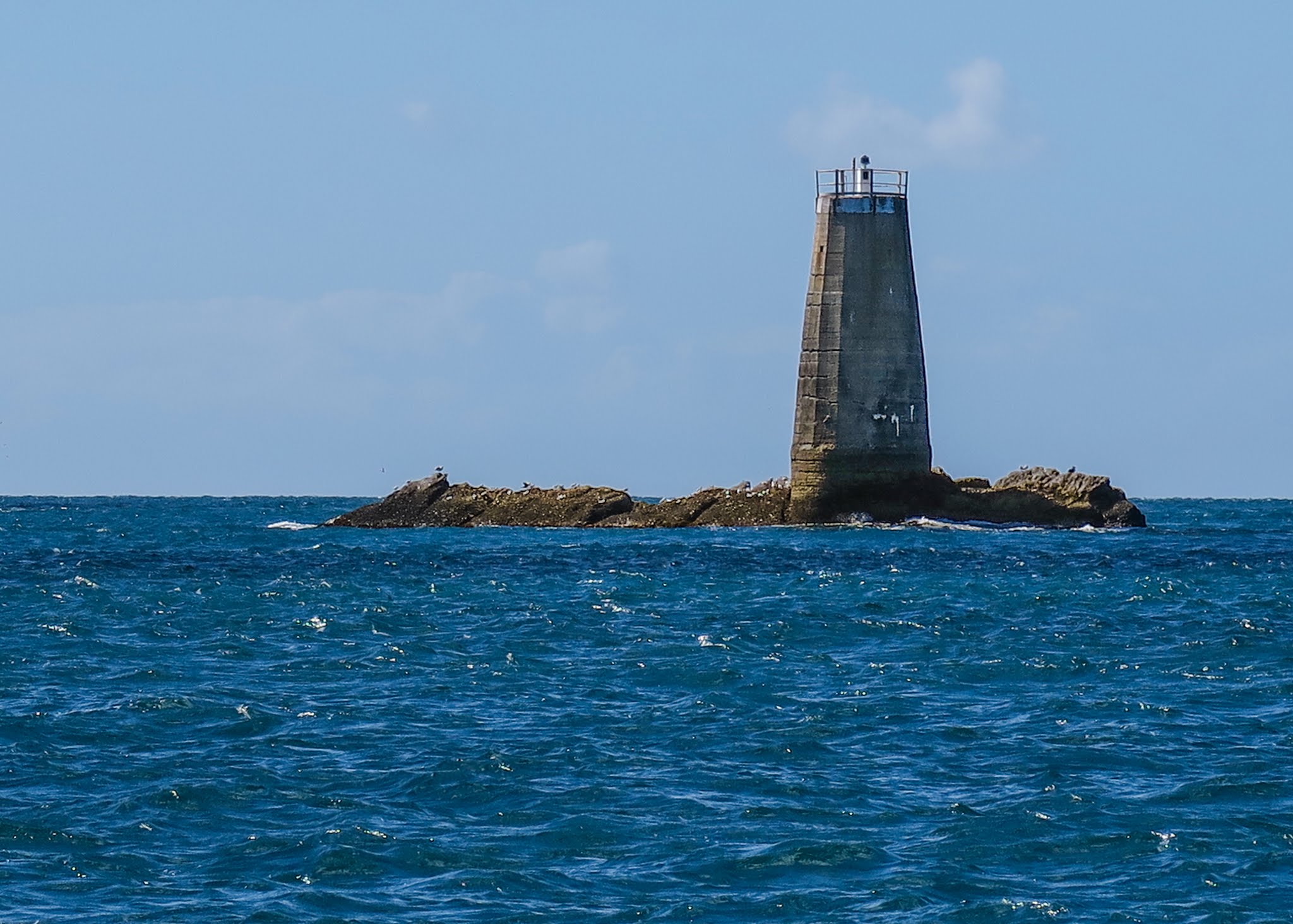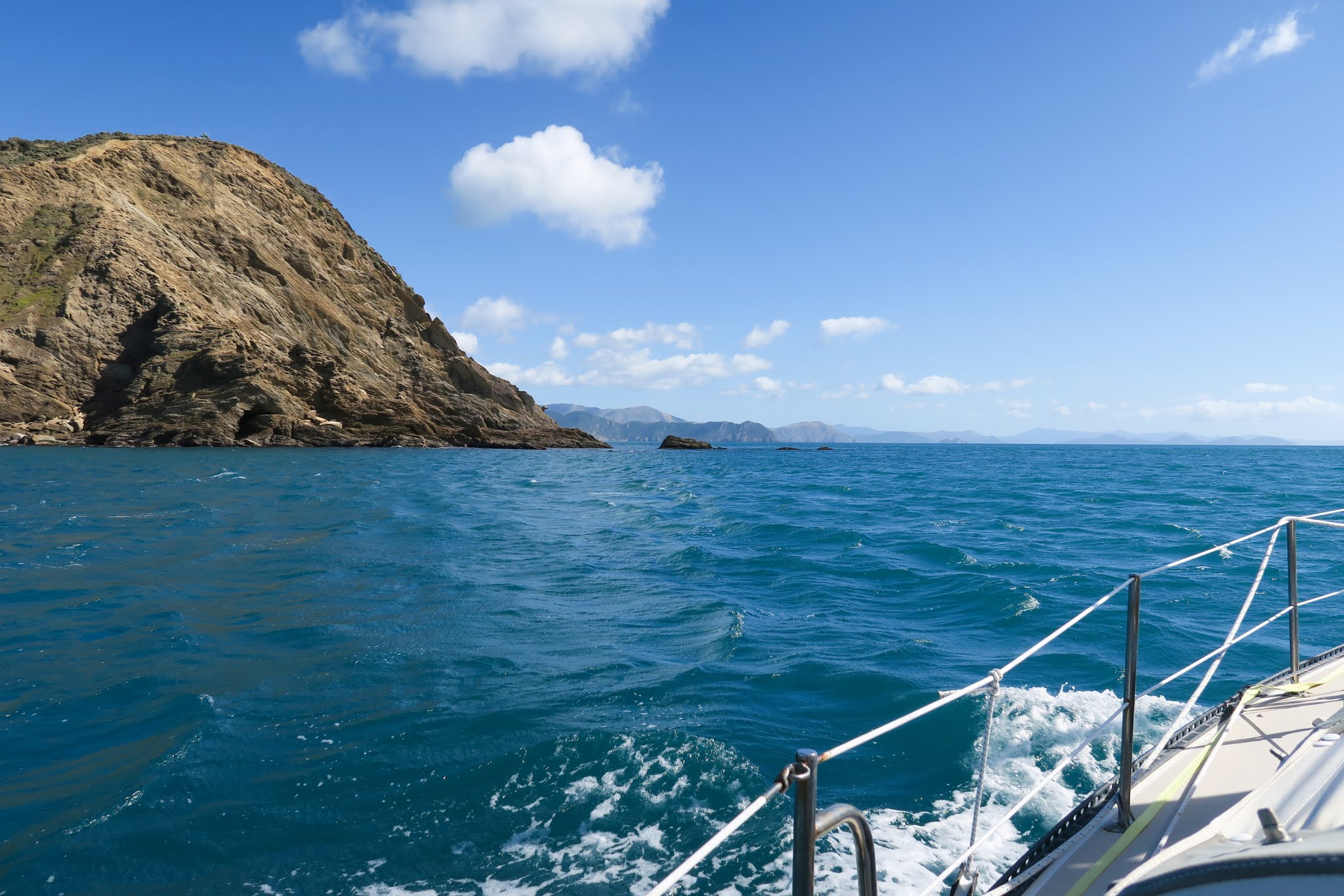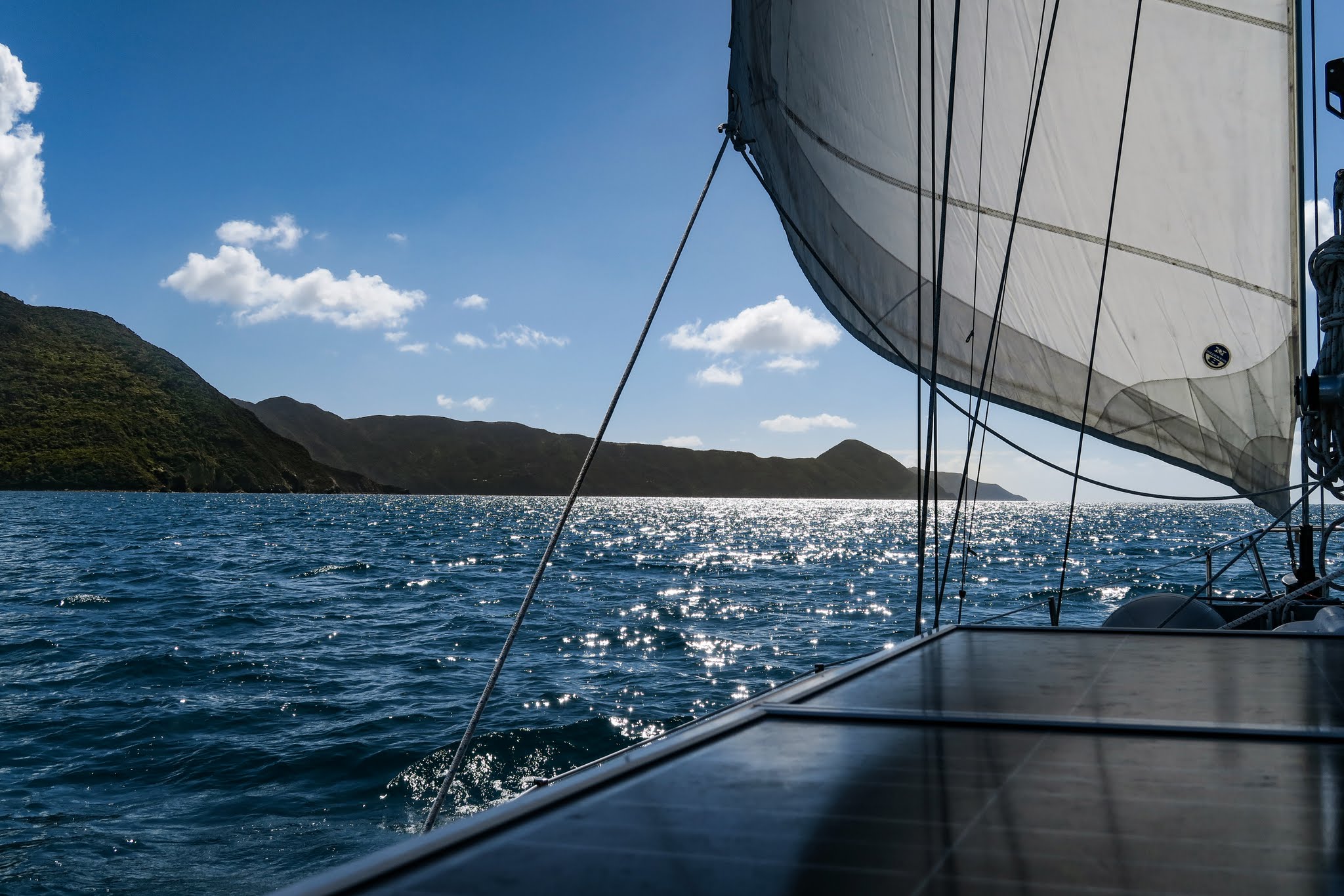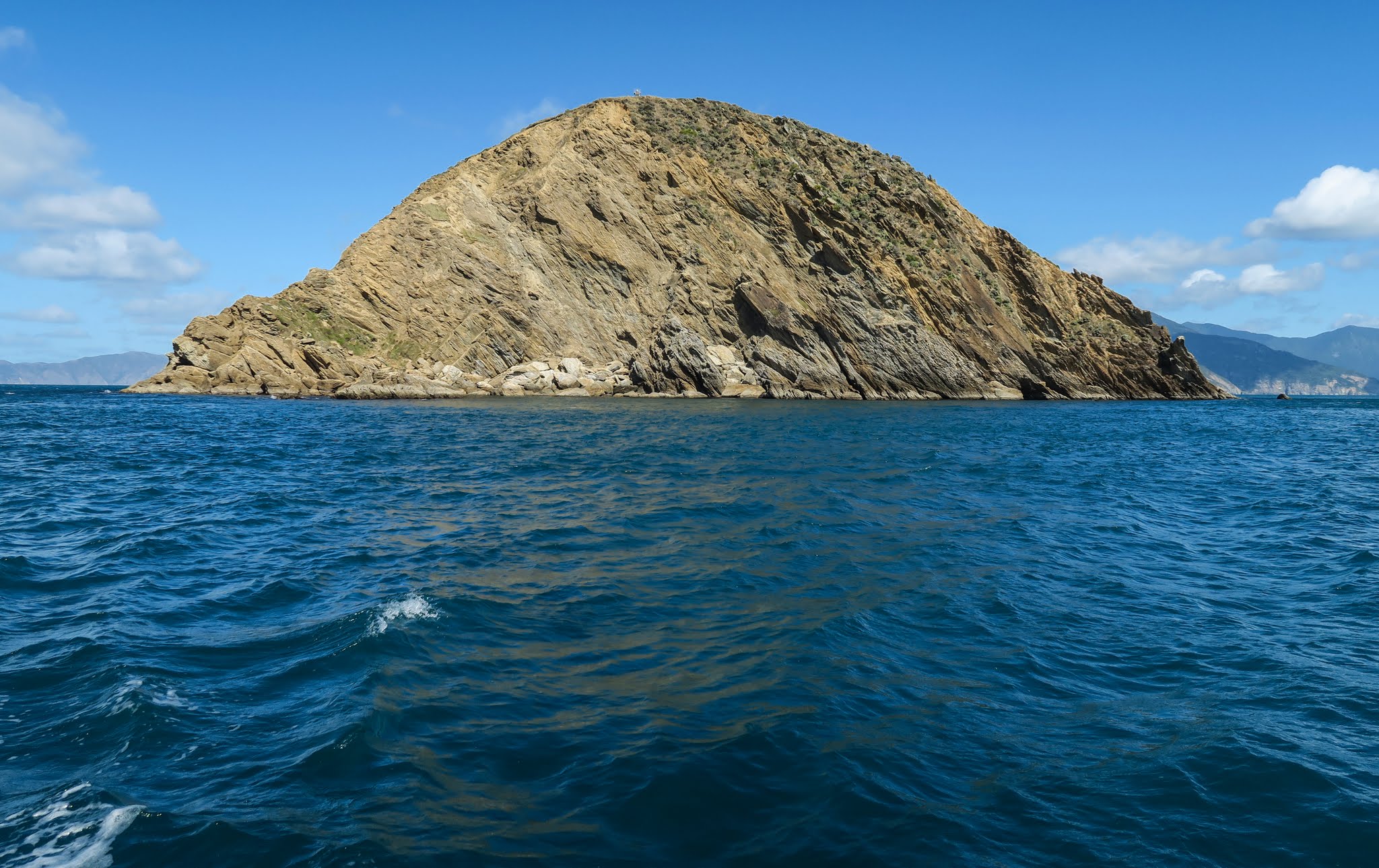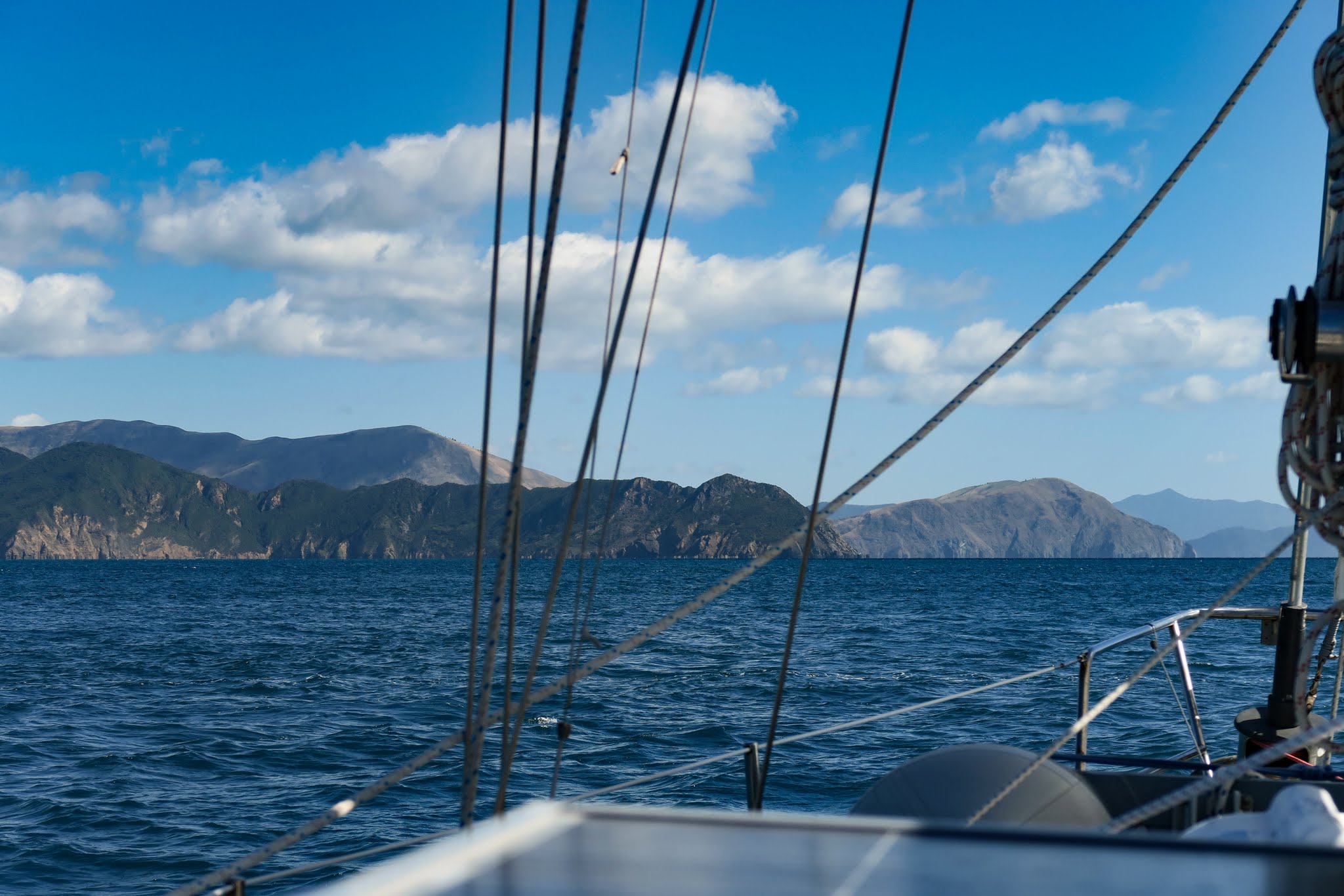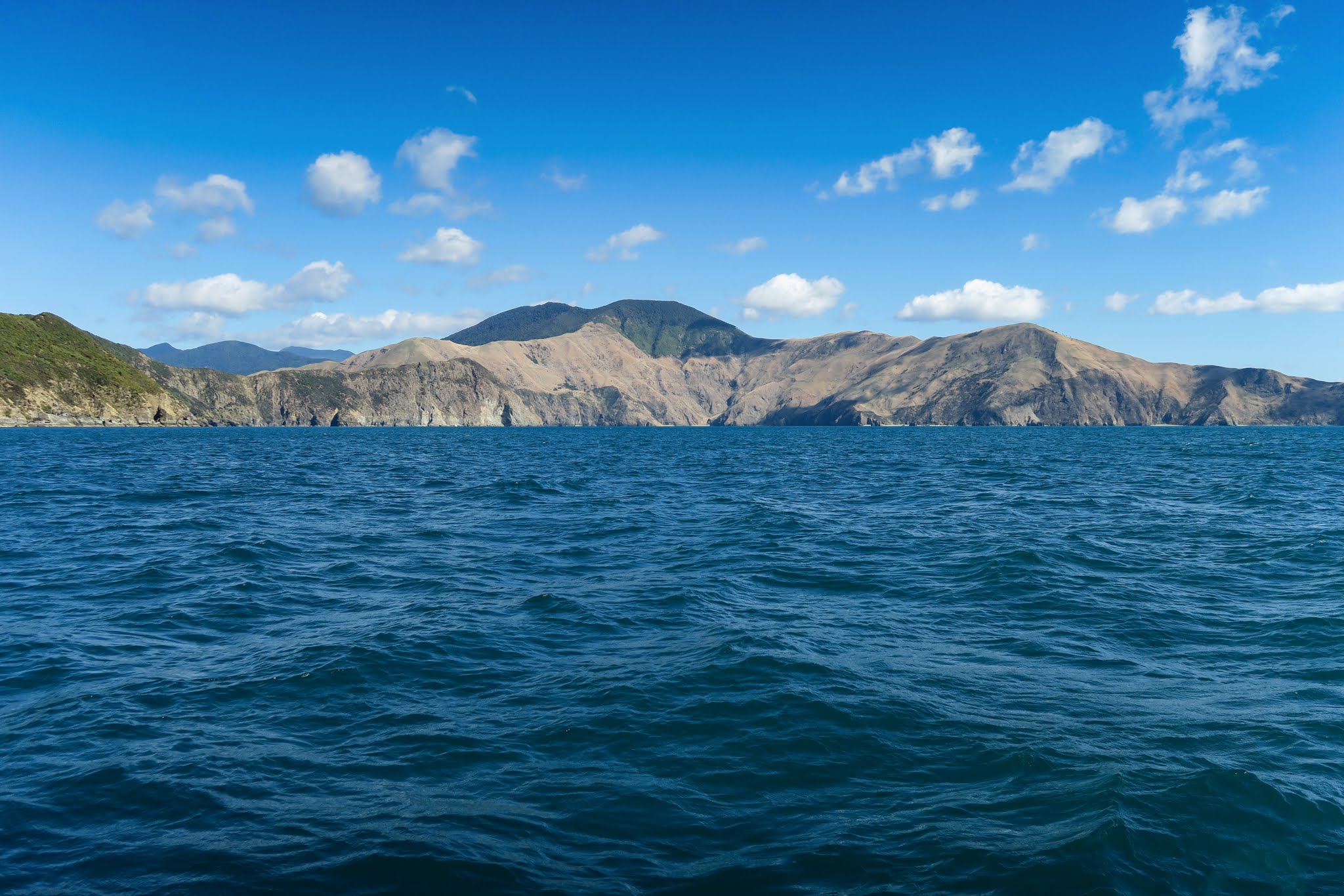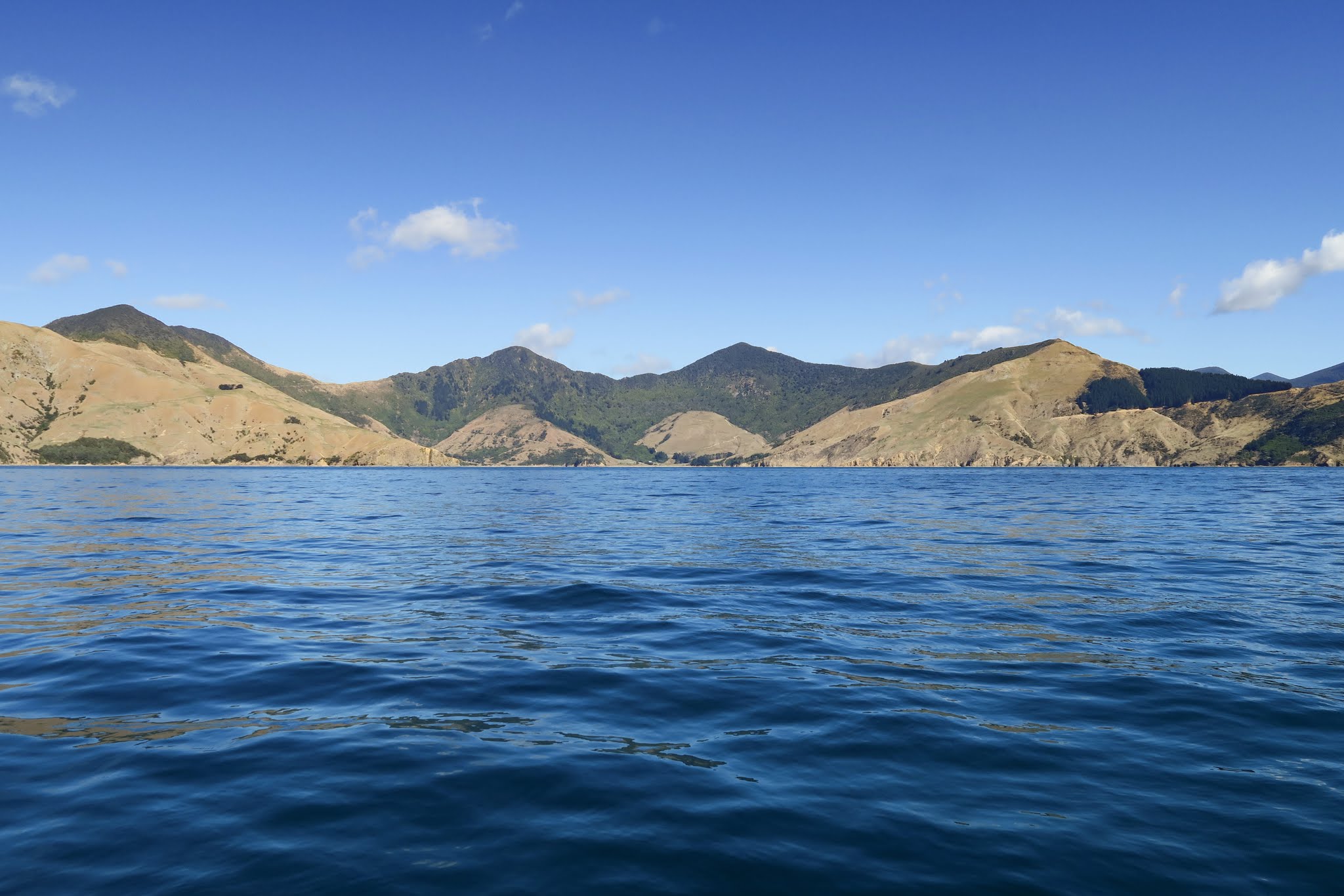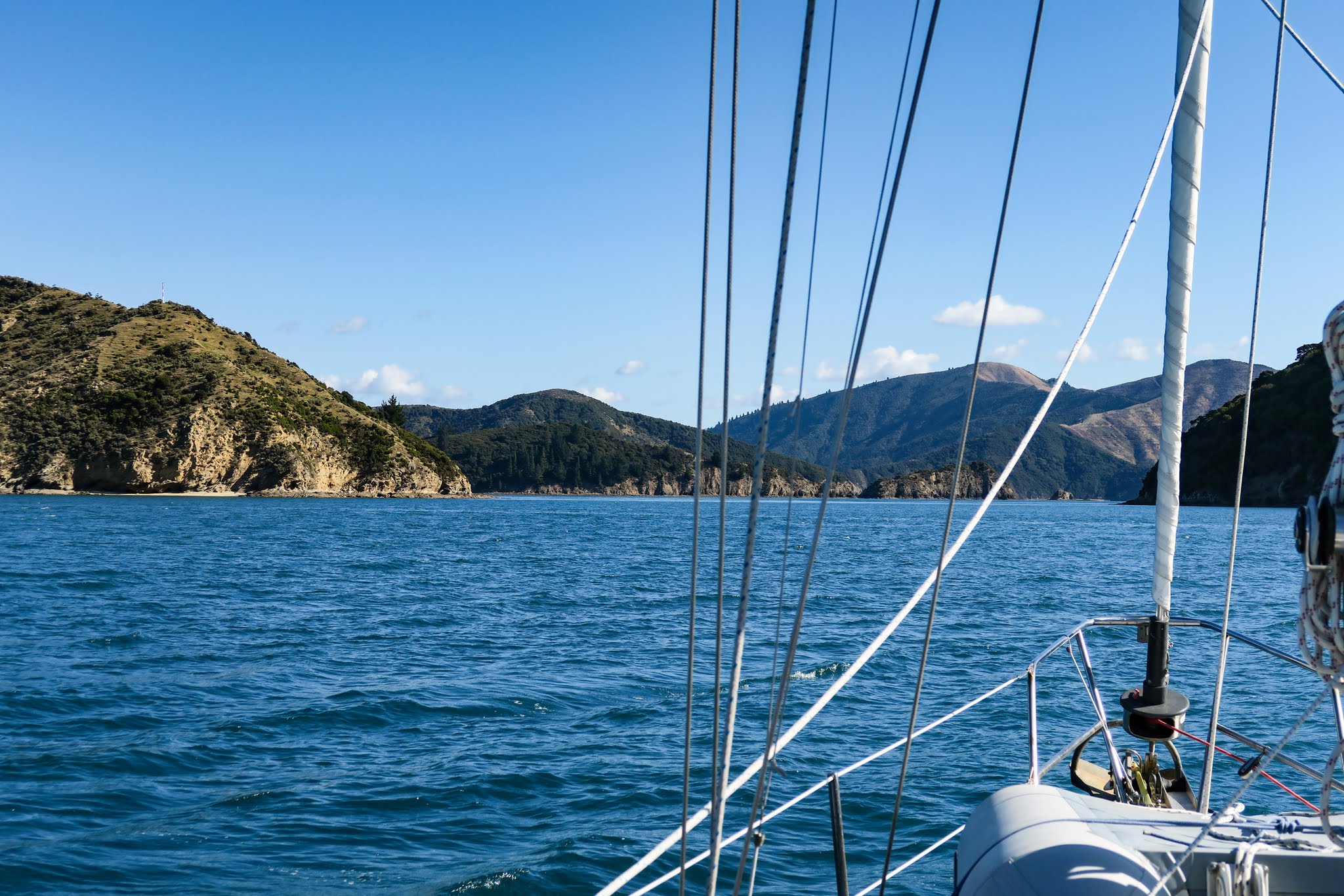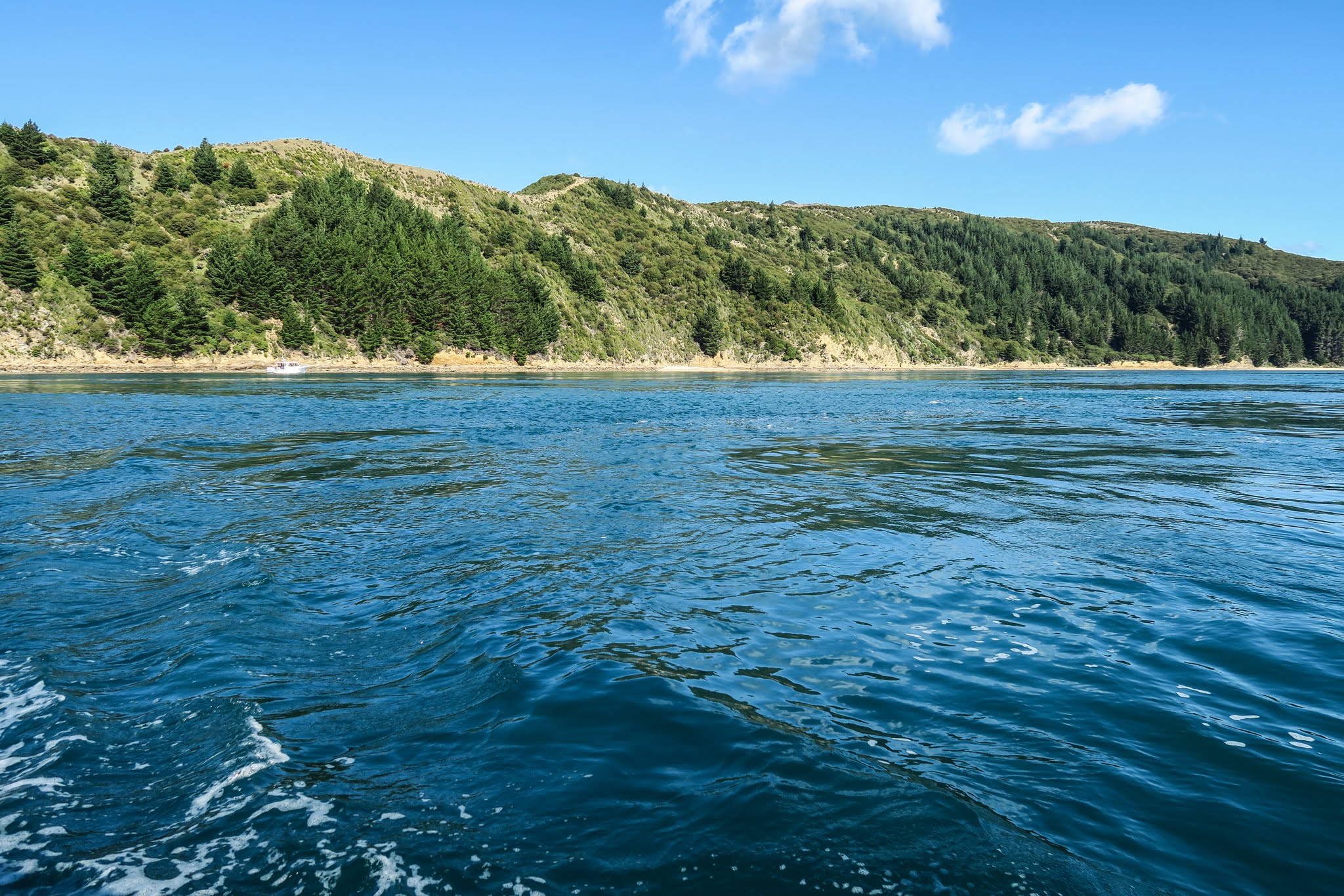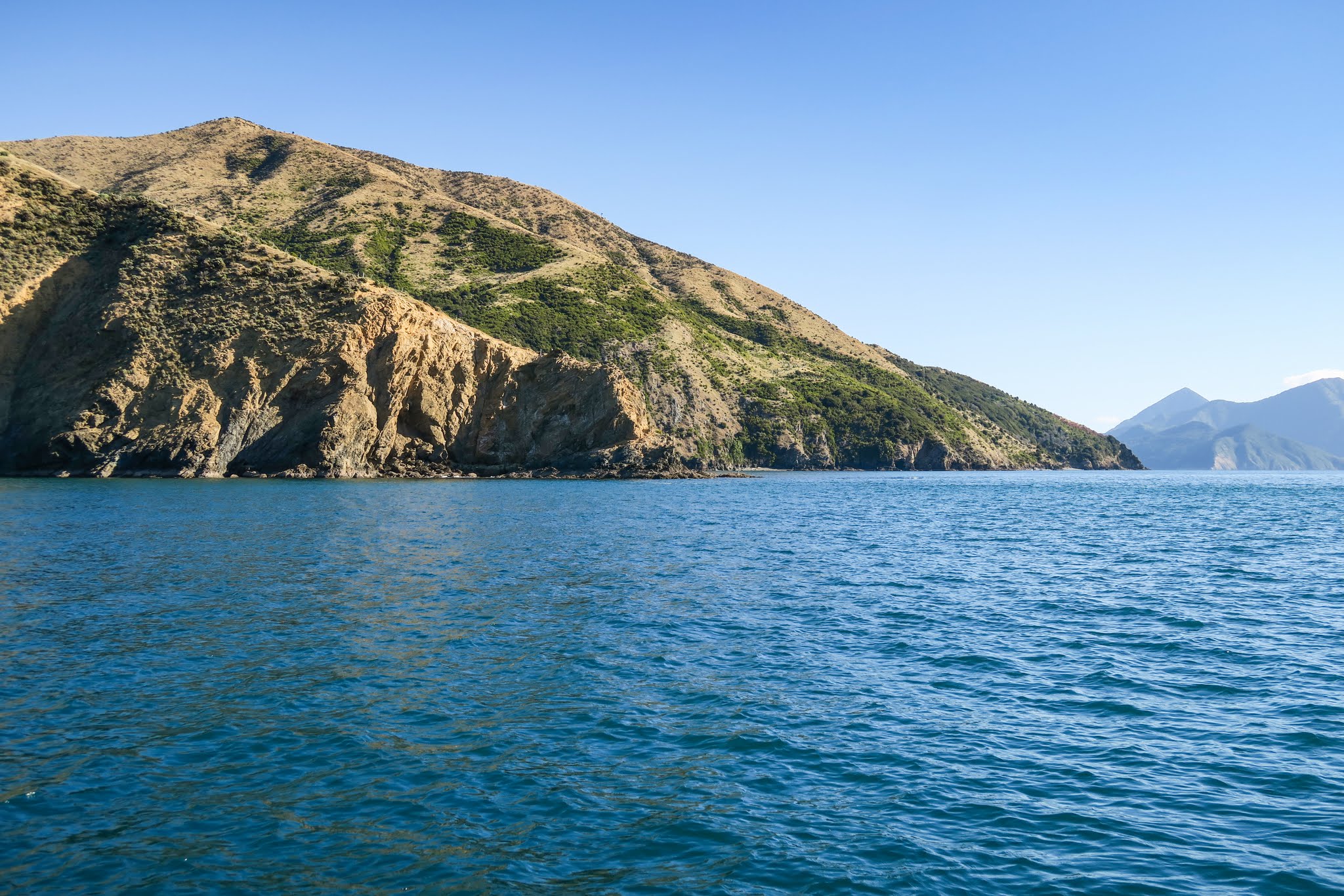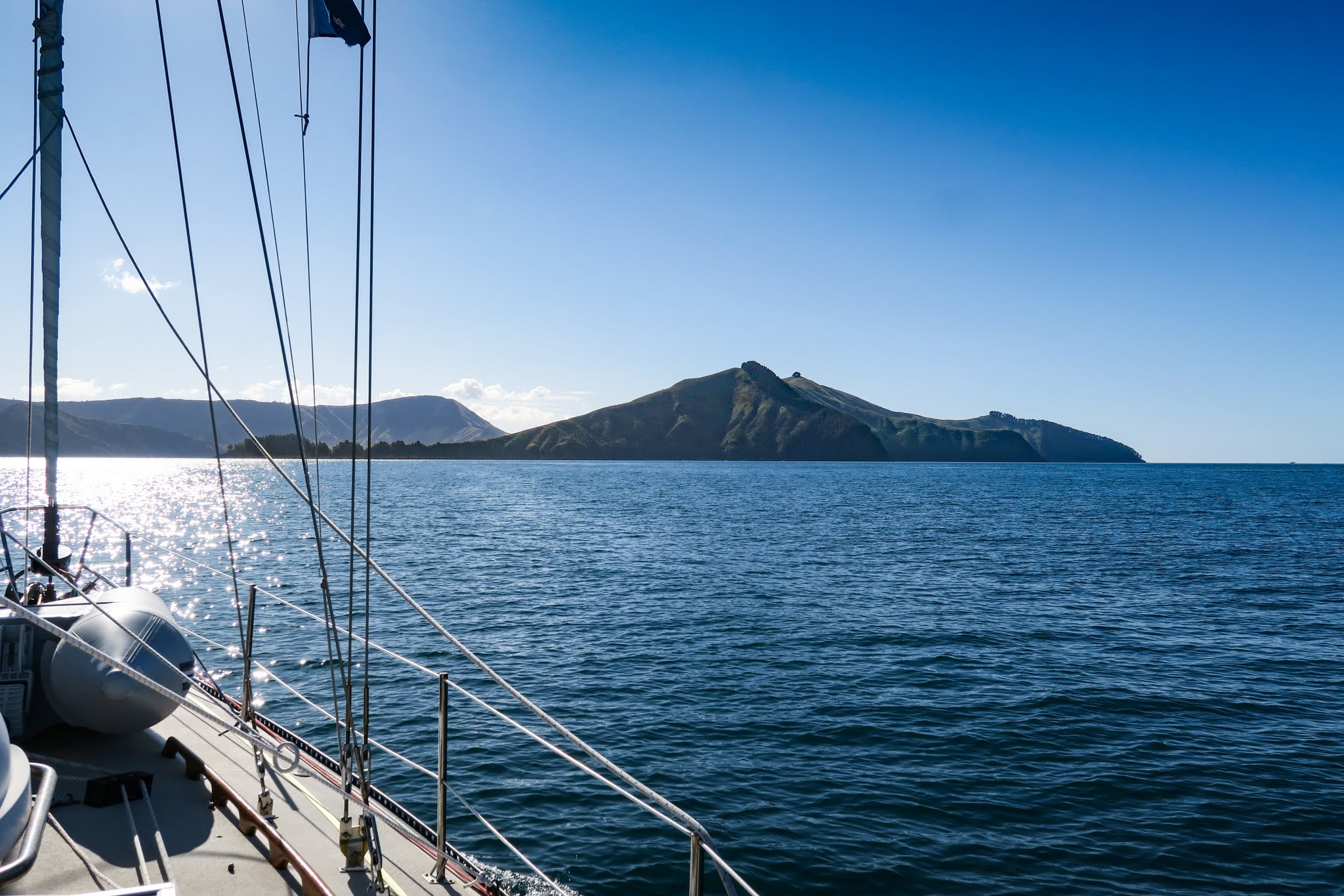April 5, 2016
Making the 26-mile journey from Queen Charlotte Sound to Pelorus Sound seems simple enough on paper, but in reality it has a few hurdles. (You can click markers on the map to see what’s what, enlarge, etc.)
The first hurdle is rounding Cape Jackson, the point at the north entrance to Queen Charlotte Sound. I don’t know if this area is technically considered the Cook Strait, but it’s close enough have some of its issues: strong currents, standing waves, funneling winds, tide rips and overfalls (I don’t know what those are but they don’t sound appealing). Thus to round the cape we needed two things: settled weather and slack tide.
We certainly had the first part of that: the light southerly wind had died to a breeze. And the second part was going well: we were timing our arrival to Cape Jackson carefully so as to round it in slack tide, then have the current with us as it picked up again. We followed the advice to stay close to the land, passing between the it and the lighthouse which stands on a sunken rock outside the point. (You can see Rich’s post about this here.) Below, our approach and rounding of Jackson Point. You can click to enlarge any of the photos below.
After that it was easy-peasy for about 7 miles across the giant, ocean-facing bays between the sounds. The area is mountainous but very barren, and we no temptation to go exploring. In fact, this reminded us a lot of cruising the Sea of Cortez in Mexico. Motoring along in still water past large desert mountains brought back a lot of memories from that time! Below, photos from that section of the trip.
As we neared Pelorus Sound we had a decision to make. An island called Forsyth nearly divides the final big bay just before the Pelorus Sound, creating Guards and Forsyth Bays with just a narrow channel of water (Allen Strait) between them. A boat has two options:
Option 1: Go down into Guards Bay, through the Allen Strait, then back up through Forsyth Bay to round the east entry point into Pelorus sound. Since Allen Strait can have some strong currents, it’s best to have it with you as you go through.
Option 2: Round the top of Forsyth Island then head down into Pelorus Sound.
At first glace it might seem easiest to go around Forsyth Island, and many people under sail will choose to do so. But Forsyth Island creates a protective barrier over both bays it’s created, and going through them lets you do the final miles in protected water rather than open ocean. This is why we chose the second option.
As we passed through the Allen Strait, the water was swirly, but with the current with us it was more fun than intimidating. Up until this point the landscape had been barren, but as we motored into Forsyth Bay we saw some pine forests on shore, and it was even kind of pretty here.
We headed on up through that bay and rounded Kaitira, the east entry point into the Pelorus Sound. Below, going through Allen Pass, and the west (Te Akaroa) and east (Kaitira) entry points into Pelorus Sound. –Cyndi

